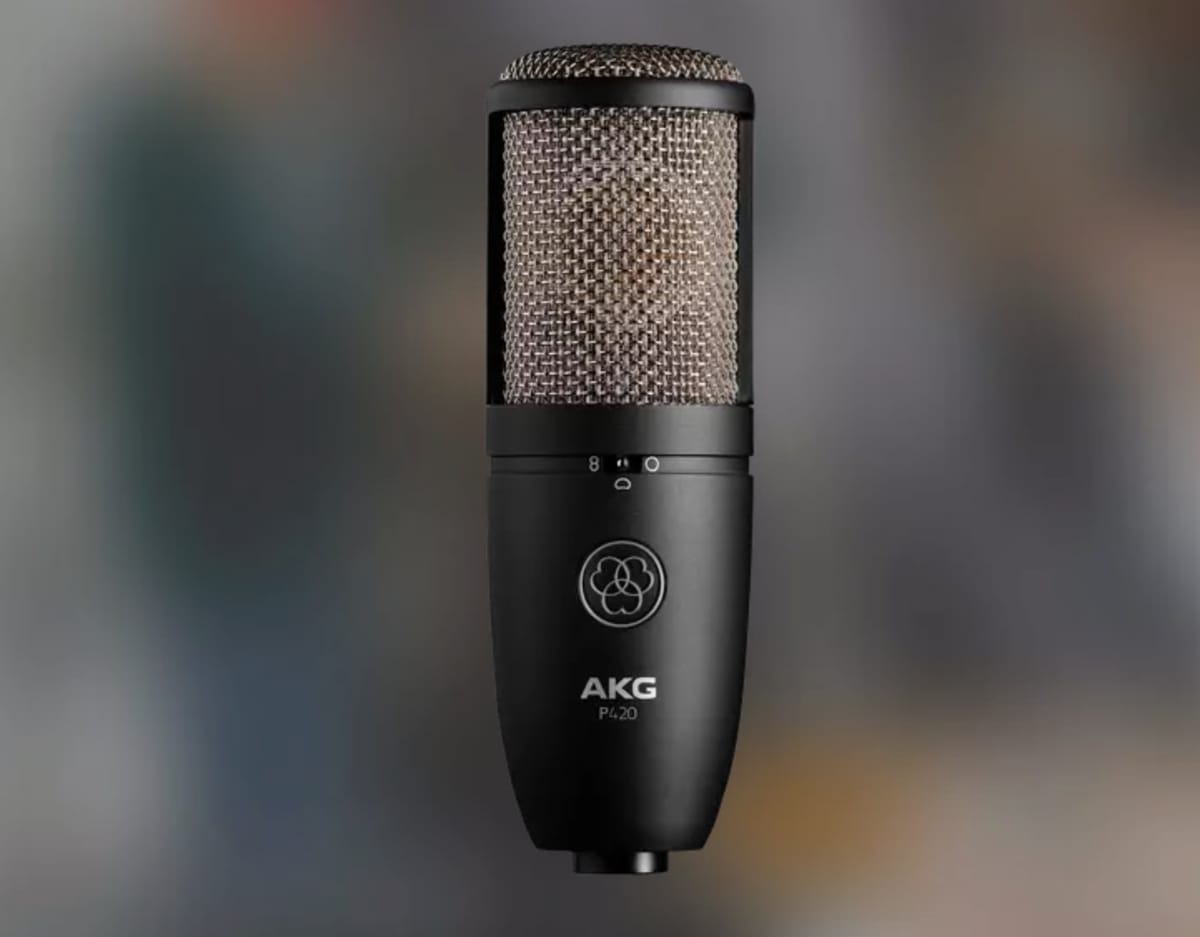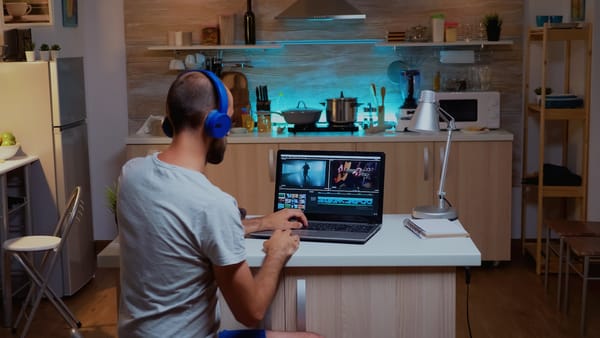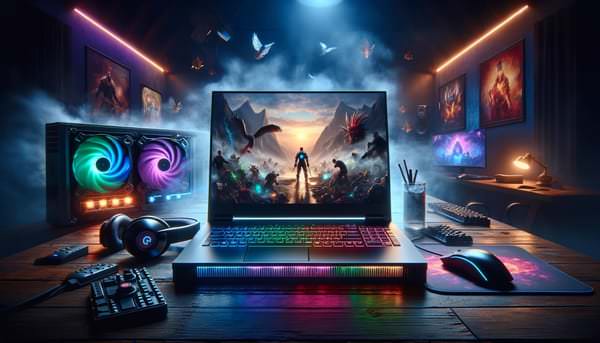Best Condenser Mic Under $200: Top Picks for Budget-Friendly Studio Quality
Looking for a budget-friendly studio quality condenser mic? Discover the top picks under $200 for your home studio and vocal recordings here!

Condenser microphones are an excellent choice for those aiming to elevate the quality of their recorded audio without breaking the bank.
If you're looking to enhance your home studio, engage in podcasting, or indulge in content creation, finding the best condenser mic under $200 can be a challenging yet rewarding venture.
These microphones are renowned for their sensitivity and fidelity, which makes them a staple in recording settings. As such, a good quality condenser mic can make a significant difference in the clarity and professionalism of your sound.
However, the variety of options available may seem overwhelming, with features and specifications that can confuse even seasoned audiophiles.
In the under $200 price bracket, the focus is on balancing cost and performance, ensuring you get the best possible sound quality within a reasonable budget.
When shopping for a condenser mic in this category, it's crucial to consider factors like polar patterns, sensitivity, build quality, and included accessories.
Understanding these aspects will help you make an informed decision that suits your specific recording needs.
Key Takeaways
- A condenser mic under $200 is ideal for improving sound quality in home studios and for content creators.
- It is important to balance affordability with performance features when selecting a microphone.
- Consider mic specifications and the nature of your recording needs to choose the right model.
Top Picks for Condenser Mics Under $200
When searching for the best condenser microphones under $200, you'll want to focus on sound quality, durability, and versatility. The following models stand out in these categories, offering the best experience within this budget-friendly price range.
Audio-Technica AT2020

The Audio-Technica AT2020 is a staple for those needing reliable studio quality without breaking the bank. It boasts a wide dynamic range, making it accommodating for various sound sources. Users often praise the AT2020 for its clean, articulate sound and durability.
AKG Perception Series

Another notable contender is the AKG Perception Series, including options like the AKG P420 which provides multi-pattern recording capabilities, including cardioid, omnidirectional, and figure-eight.
This series is known for its sturdy build and excellent performance across different recording situations. Your recordings gain the benefit of low noise and high sensitivity, integral for capturing nuanced performances.
Shure PG ALTA Series

Lastly, you can explore the Shure PG ALTA Series if you’re looking for microphones that deliver both quality and versatility. Shure's mics, such as the PG42, are highly regarded for their warm sound profile and robust construction. The PG ALTA series is engineered to withstand daily studio use while providing a consistently clear audio capture, a fact often echoed in user reviews.
Why Choose a Condenser Mic
When it comes to capturing vocal performances or acoustic instruments with clarity and detail, a condenser microphone is your go-to choice. These mics are favored in studio settings for their sensitivity and high fidelity.
Characteristics of Condenser Mics
Condenser microphones feature a lightweight diaphragm that is suspended close to a solid metal plate, known as a backplate. This architecture allows condenser mics to pick up on the subtleties of sound waves with greater fidelity than most other types of microphones. Here's what sets them apart:
- Sensitivity: Condenser mics are highly responsive to subtle nuances, making them ideal for studio work.
- Frequency Response: They exhibit a wide frequency response, capturing a broader range of sounds from low bass to high treble.
- Transient Response: The thin diaphragm vibrates with great precision, rendering the attack of a sound (like the first pluck of a guitar string) with crispness.
Condenser vs Dynamic Mics
The choice between a condenser and a dynamic mic hinges upon your specific needs:
- Use Case: If you require a microphone for studio recordings to capture the intricacies of sound, a condenser mic is superior. However, for live performances or high-volume settings, dynamic mics are traditionally favored due to their ruggedness.
- Sound Quality: Condenser mics generally provide a better sound quality than dynamic mics in controlled studio environments, capturing a wider range and more accurate reproduction of sounds.
Remember, while condenser mics deliver exceptional sound quality, they also require a power source (phantom power), whereas dynamic mics do not. This makes condenser mics less portable but unparalleled in a studio setup where detail and sound quality are paramount.
Factors to Consider When Buying Under $200
When looking for the best condenser microphone under $200, pay attention to specifications that can greatly impact recording quality; this includes polar patterns, frequency response, diaphragm size, and connectivity options.
Polar Patterns and Sound Source
Cardioid: This pattern is heart-shaped and picks up sound from the front while minimizing noise from the back and sides. Cardioid microphones are ideal for recording vocals and solo instruments as they focus on the sound source directly in front of them.
Other Patterns: Some microphones feature switchable polar patterns, like omnidirectional for capturing sound from all directions, and figure-8 for picking up sound from the front and back, useful in dual speaker settings.
Frequency Response
Your microphone's frequency response dictates how well it can reproduce low, mid, and high frequencies. A broad frequency response range—typically from 20Hz to 20kHz—is desirable for versatility. For precise vocal capture, look for a mic with a frequency response that enhances vocal clarity and minimizes unwanted low-frequency rumble.
Diaphragm Size
Large Diaphragm Condenser (LDC) mics often have a warmer, fuller sound ideally suited for studio vocals and deep instruments. Their sensitivity is higher and they excel in controlled environments. For under $200, you can find quality LDC microphones which are a staple in home studios.
Connectivity Options
- XLR: The most common connectivity option for professional-grade microphones. XLR connections require an audio interface or mixer with phantom power, but they provide superior sound quality and lower noise levels.
- USB: USB mics are plug-and-play, making them convenient for straightforward, computer-based recording setups. Although they generally offer less control than XLR mics, some of the best USB condenser microphones under $200 deliver excellent quality for podcasting and live streaming.
Best Practices for Using Condenser Mics
When recording with a condenser microphone under $200, a solid setup in your recording space and proper maintenance are crucial to achieving the best sound quality. These microphones are sensitive and capable of capturing great detail, so handling them correctly is key.
Setting Up Your Recording Space
Your recording space will majorly impact the quality of your audio recordings. To begin with, you should mount your microphone on a sturdy mic stand to avoid any unnecessary movement that could introduce handling noise. Employing a shock mount can be very beneficial as it helps to isolate the microphone from vibrations and stand noise. The use of a pop filter placed in front of the microphone will help to alleviate plosives, those popping sounds that occur when pronouncing letters like 'p' and 'b'.
Acoustic Treatment:
- Use soft materials to dampen echo and reverb.
- Position diffusers to break up standing waves.
Microphone Placement:
- Experiment with distance and angles relative to the sound source for the best results.
- Avoid direct path reflections by not pointing your microphone towards walls or hard surfaces.
Handling and Maintenance
Taking care of your condenser mic will extend its lifespan and ensure consistent performance. Always hold the microphone by its body, not by the grill or the cable, to reduce the risk of handling noise. When not in use, store your microphone in a dry, dust-free environment to protect its sensitive inner components. If your microphone includes a low cut filter, be sure to engage it when recording in environments with low-frequency noise or if the sound source doesn't require low-end information.
Cleaning & Care:
- Regularly clean the body and grill of the mic with appropriate cleaning solutions.
- Inspect and replace cables and connectors as needed to avoid signal loss or degradation.
Remember, the precision of a condenser mic also means it requires your attentive care. With these best practices, you’ll be set to capture professional-grade recordings even with an affordable microphone.
Popular Applications for Condenser Mics
Condenser microphones are a staple in both professional and home studios due to their sensitivity and fidelity. They excel at capturing the nuance in a wide range of applications.
Vocal Recording
When you're recording vocals, the clarity and detail that a best condenser mic can provide is unmatched. Whether you are working on a silky smooth vocal, a powerful lead, or delicate backing harmonies, a condenser mic, often referred to as a vocal mic, is an excellent choice. Its ability to capture the full frequency range of the human voice makes it a go-to for any vocal recording session.
- Essential for vocals: Condenser microphones are ideal for capturing the subtle nuances of your voice with clarity and accuracy.
Instrumental Recording
For recording instruments, particularly an acoustic guitar, the fidelity of a condenser microphone is invaluable. The sensitive nature of these mics allows you to capture the rich harmonics and resonance of the guitar. Home studio operators frequently select a condenser mic for recording acoustic guitar because they can faithfully reproduce the sound without the coloration and noise that dynamic mics might introduce.
- Optimal for acoustic guitars: The finesse of a condenser microphone is perfect for recording the natural sound of an acoustic guitar.
Multimedia Production
Condenser microphones are not limited to music – they're also powerful tools in multimedia production. Whether you're creating a podcast, recording a voice-over for a video, or streaming live, a condenser mic ensures that your audio is crystal clear. This kind of vocal microphone is adept at capturing vocals and can also serve as an all-around mic for various production needs.
- Versatile across media: Use a condenser mic to elevate your multimedia projects with professional-grade sound.
Advanced Features Within Budget
Quality condenser microphones under $200 can bring advanced features to your home studio that were once the preserve of high-end models. Expect functionalities like attenuation pads for managing loud sound sources and versatile polar patterns for a wide array of recording scenarios.
Attenuation Pads and Filters
Your budget condenser mic may include an attenuation pad—often a -10 dB pad—which allows you to record louder sounds without distortion.
This feature decreases the microphone sensitivity, enabling you to capture high SPL (Sound Pressure Level) sources at a reduced volume level.
Additionally, look for a low cut switch or high-pass filter, crucial for eliminating low-frequency rumble. A roll-off setting can help reduce unwanted bass frequencies, rendering your recordings more focused and clear.
Multi-Pattern Mics
Multi-pattern microphones offer the flexibility to switch between different polar patterns, such as cardioid, omnidirectional, and figure-8.
This versatility means you can use your multi-pattern condenser mic for a variety of applications—from isolating a single sound source to capturing the ambiance of a room.
Models under $200 now include these features, allowing for a range of recording techniques that can adapt to your project's needs.
Making the Decision
Choosing the right condenser microphone under $200 means considering what you'll get for the price and how it meets your specific needs.
Assessing Your Needs
Before investing in a microphone around the $200 mark, think about what you want to achieve with it. Is the mic intended for podcasting, streaming, or recording instruments? A workhorse mic like the AKG P120 could be suitable for various applications, combining a straightforward design with sturdy construction.
Comparing Price and Value
When considering a mic in this price range, compare it to more expensive microphones to determine the best value. Look for features that typically drive up the cost, such as multiple polar patterns or a low noise floor.
However, a best value condenser mic under $200, like the Audio Technica AT2020, often provides professional-quality sound without the high-end price tag. Make sure you're not paying extra for features you won't use. Looking at microphones on the market, identify the right microphone that gives you what you need without unnecessary extras.
Frequently Asked Questions
https://www.youtube.com/watch?v=yy05PJNXVfE&embed=true
When you're looking for a quality condenser microphone that fits within a $200 budget, a few key questions often arise. Here, you'll find specific answers tailored to those seeking the best audio recording solutions without breaking the bank.
What are the top recommended condenser microphones for home recording within a $200 budget?
For home studio recording, the AKG Perception series stands out as a top recommendation. These mics offer a durable build and a high dynamic range suitable for various applications.
Can you suggest quality condenser microphones for podcasting that are priced below $200?
Yes, for podcasting, consider mics with a cardioid polar pattern that captures sound directly in front and rejects side noises. The best condenser mics for podcasting under $200 provide clear sound quality and are versatile enough for different recording environments.
Which condenser microphones are best for gaming and have a price point under $200?
Gaming mics under $200 should offer clarity and detail. Select one that minimizes ambient noise and focuses on your voice. Look for options with USB connectivity for an easy setup.
For vocals, what are the best condenser microphone options available under $200?
For vocal recordings, choose a condenser microphone that can accurately capture the nuances of the human voice. The best microphones for vocals typically have a broad frequency response and come with essential accessories.
Are there durable and reliable condenser microphones that come with a modest price tag?
Certainly, there are several condenser microphones under $200 that are both durable and reliable. Look for those that include protective cases and shock mounts to enhance longevity and performance.
What characteristics should I look for in a budget-friendly condenser microphone for studio-quality sound?
In a budget-friendly condenser microphone, seek out low-noise electronics, a wide frequency response, and a cardioid polar pattern for the best studio-quality sound. Additional features like multi-pattern switches and the requirement of phantom power may also be important, depending on your needs.



